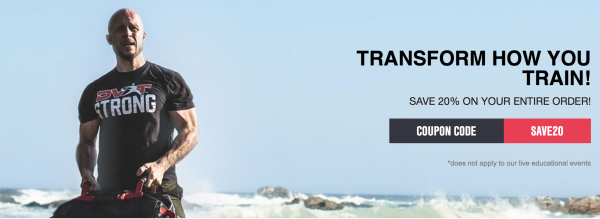Solving Shoulder Pain with Functional Fitness
2019-01-3
Jessica Bento, Physical Therapist
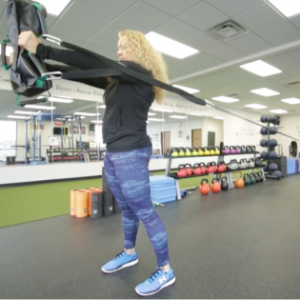
When we release our DVRT Educational Courses we get most excited to provide information that would allow people to understand how to fix common fitness issues quickly. Let’s face it, injury will be the FIRST thing that will derail any fitness program, even the New Year’s ones! I use to see it all the time in the clinic, New Year’s programs would have people seeing me relatively quickly. A big one was always shoulder pain!
People who were well meaning and wanting to achieve new fitness goals would go to town with push-ups, running, and thinking about how to beat themselves up for being “bad” during the holidays rather than thinking about how to build their bodies up! Within a short few weeks I would be packed in the clinic with new patients that were hurting because they weren’t focused on movement, but trying to build up their muscles.

When we say movement in today’s fitness and therapy landscape people misunderstand that we are still talking about muscles. The truth is that we are talking about way MORE muscles than those that are thinking of hitting those delts or rotator cuffs to help their shoulder pain. I thought shoulder pain and how functional fitness addresses this common issue would be very relatable for many. Where do most training programs fail in addressing true shoulder pain?
The Shoulder Is A Victim
Physical therapist, Diane Lee, has a great saying, “the victims always scream louder than the criminal.” What does that mean? She pointing out that we often have something hurt and think WHERE it hurts is where the problem is being caused. However, the more you look at functional fitness and issues like shoulder pain you will see that it quickly becomes a much different picture.
If we understand that everything comes from the ground up, we begin to see that everything in our body is based upon how strong of a foundation we possess. The more we go up the body, the more joints and areas of the body we have to consider when we look at issues like shoulder pain. The point of looking at concepts like Thomas Myers popular “Anatomy Trains” is to understand how interconnected the body really is in movement.
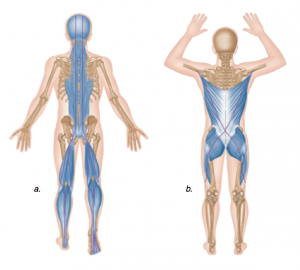
You can see how our feet are connected all the way to our head and how much our core and upper body are even influenced what happens from the ground up!
Looking at how high up the body the shoulders sit, it means they are impacted by the foundation of the feet, hips, and core. This has been something we have covered a lot in discussing ideas like Strength Coach, Mike Boyle, and physical therapist, Gray Cook’s “Joint by Joint Approach”. The idea that the body is connected is the foundation to functional training and changes how we see training the body.
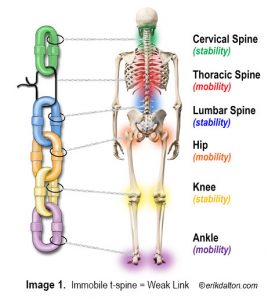
Instead of trying to isolate the shoulder and make the body work in isolation, we want to see our training connect the body through exercise. That means developing a strong foundation with the feet and the hands. Josh has spoken a great deal about the importance of the feet and hands in training because they are! Famous physical therapist, Gary Gray, founded the concept of “Chain Reaction” which goes into great detail how force entering the body goes through a large chain reaction up the body impacting everything from head to toe. The fascial lines that Thomas Myers discusses is a very similar concept of showing how something at the feet and hands can impact parts of the body that seem unrelated. That is why shoulder pain can’t JUST be the shoulder. Even when the shoulder shows dysfunction we should still integrate, not isolate.
Setting Good Foundations
Some people think that the most unique aspects of our education programs is the “new” exercises they learn. The reality is the power is in the little details that make a HUGE impact upon your training. For example, we like to use the half and tall kneeling positions to teach people how to avoid shoulder pain and understand how to use their bodies smarter.
We can be in those positions, but unless we are actively using the ground, their benefits are very small. Using the feet to drive into the ground allows us to start creating a foundation with the feet, legs, glutes, and core. Relaxing our feet gives us no foundation to have our shoulders work from and forces unnecessary isolation of the shoulders that can cause shoulder pain to actually increase.
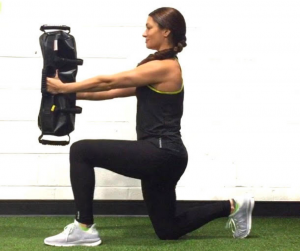
DVRT Master, Annmarie Licatese, shows how we solve problematic shoulders from the ground up! This sneaky drill is a strong solution to many shoulder pain situations.
Such a foundation helps half what the body needs. Using the hands is the second half. Working in creating specific tension techniques against the implements we use can instantly decrease shoulder pain by taking stress through the entire body, not just the shoulders. This tension with load is how we build up rotator cuffs, improve upper body mobility, and instantly improve strength!
Push Down, Not Out or Up
Having battled shoulder pain since I was a teenage swimmer, I get the frustration that injuries cause and decrease your desire to want to strength train. When I met Josh, I was mostly doing some aerobic activity and VERY light strength training. That was because I was more afraid about hurting myself and thought strength training meant I would have to hurt!
Josh transformed a lot of that for me as he taught me the keys of not focusing on pushing a weight up or out as much as driving my body down. Not only was I able to decrease shoulder pain almost instantly, but I was able to start doing push-ups! Something that even though I had been a high level athlete, really struggled in performing and doing so without shoulder pain!
The challenge comes into how do you teach people how to push down instead of pushing up or out. That is why our Press Outs are such a foundation to our training programs. From the outside they look like a confusing exercise, are they a chest exercise, what are we doing? The real goal of Press Outs is to teach pushing down in the feet, creating tension in the hands to stimulate the lats and to use the chain of the feet, core, and lats to press instead of the shoulders.
Once you start to learn this technique we can add layers by moving the weight to a more vertical position. While most people would think doing so would increase shoulder pain, the truth is that most people when they learn to use their feet, core, and lats, their shoulder mobility improves to the point where they can do these movements which start to build the full body value that that pressing can offer!
I hope you see how these principles are reflected in the movements and tools we are using. The real goal of programs like L.I.F.T. is to provide you more tools to help teach people better movement so we can help them reach their fitness goals!
Don’t miss saving 20% on our DVRT Online Certifications & Courses with code “save20” HERE. Don’t miss using the same code to save 20% ALL throughout DVRT too HERE. Stay strong!
© 2025 Ultimate Sandbag Training. Site by Jennifer Web Design.

